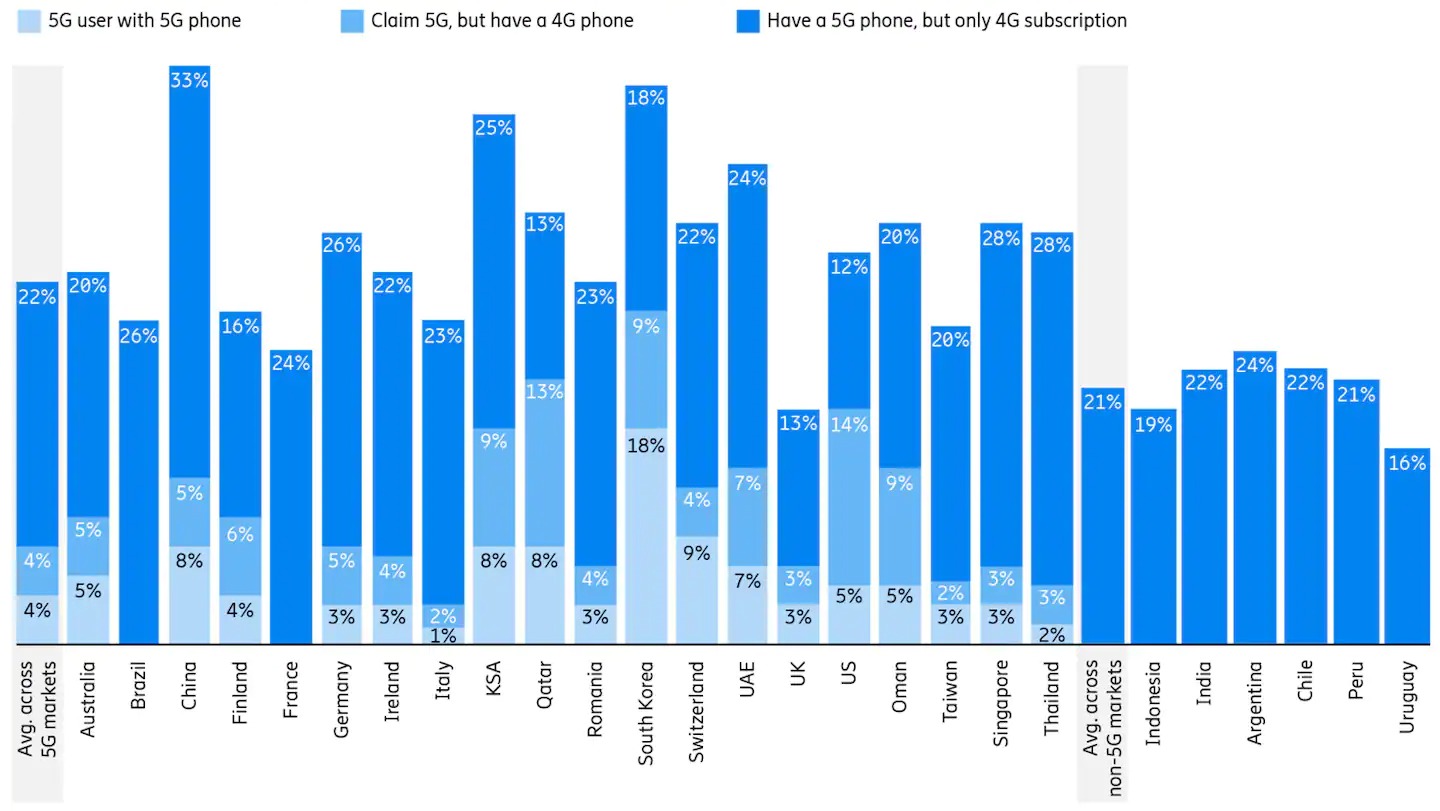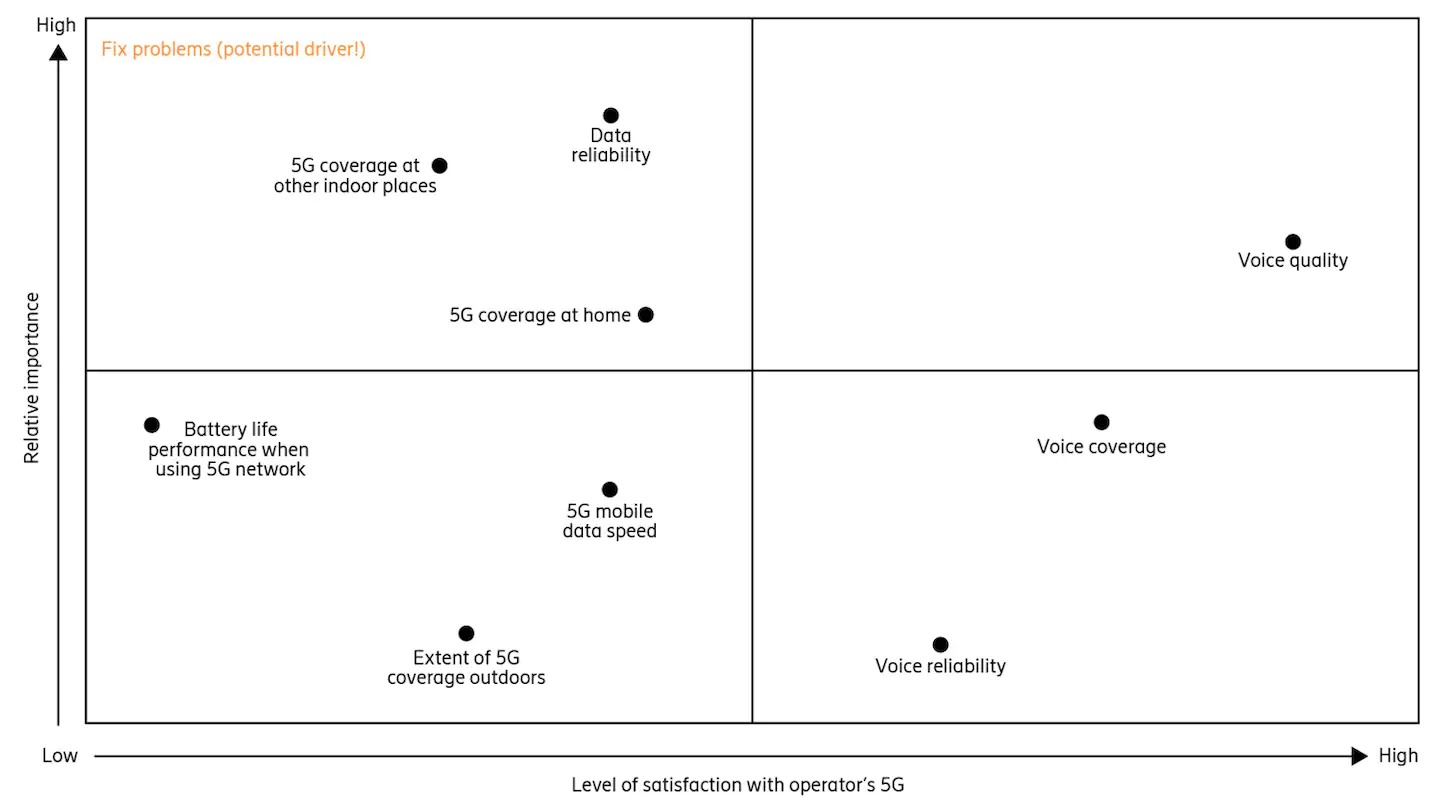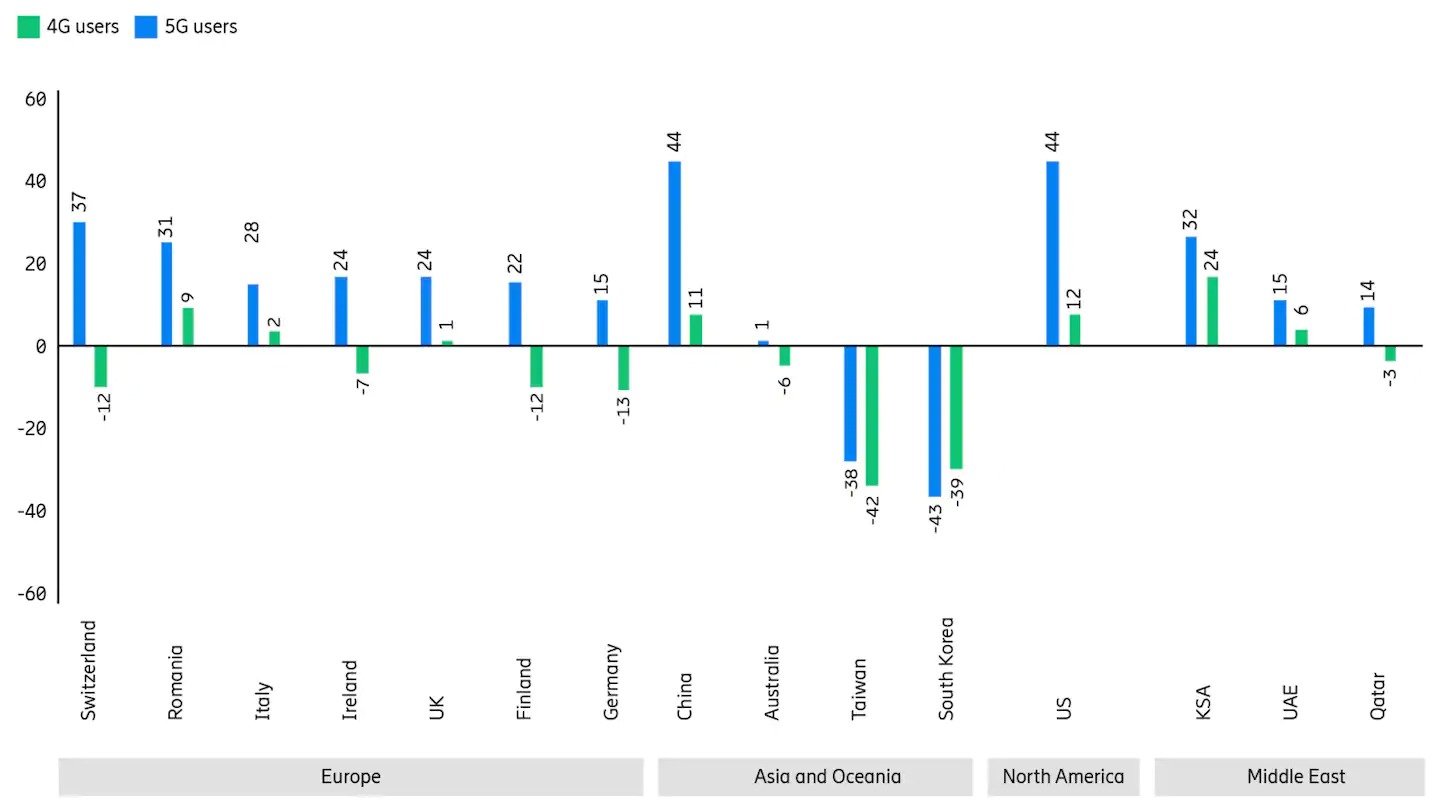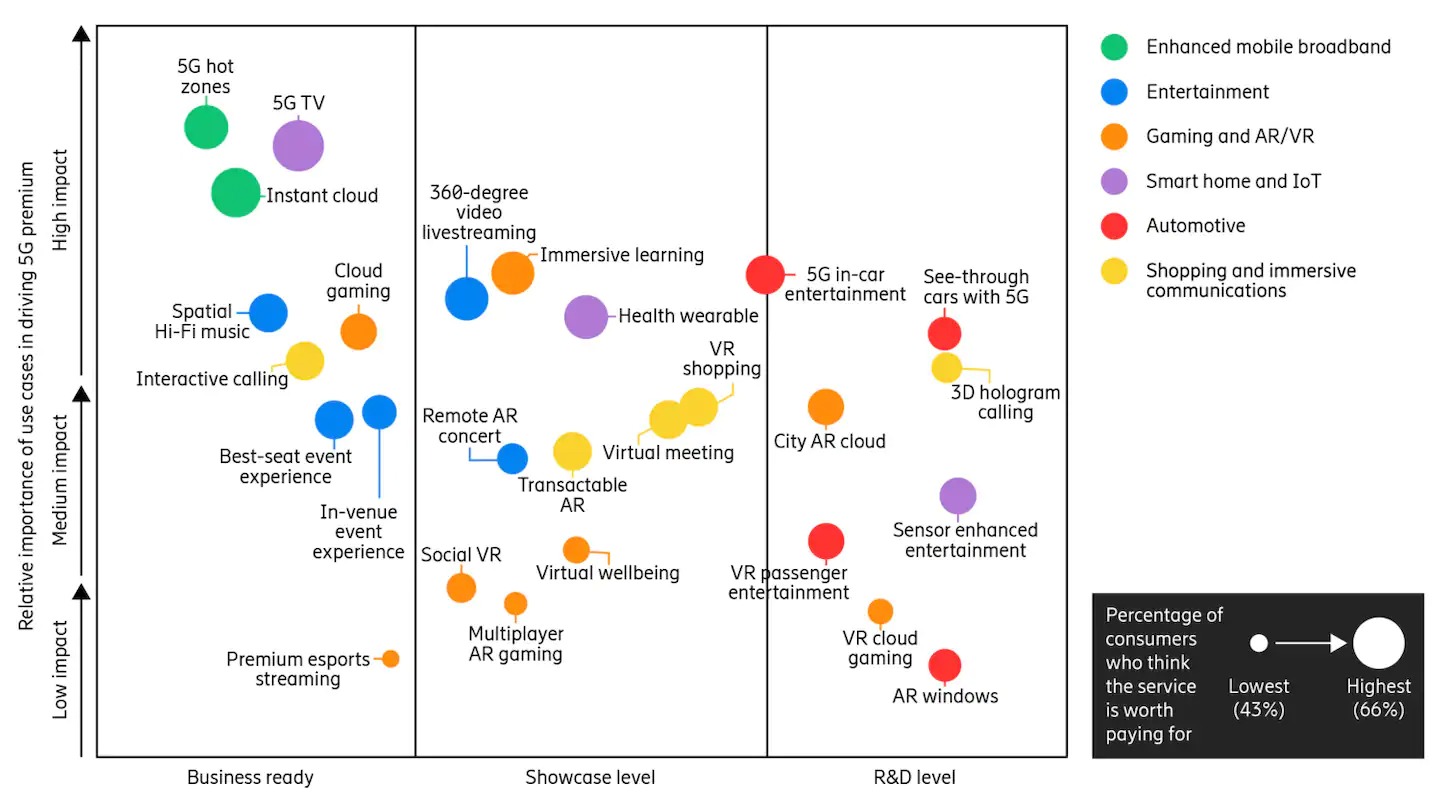How to improve the 5G consumer service experience

How do early adopters view the 5G network experience?
In this ConsumerLab Insights report, the largest-ever 5G consumer study covering the opinions of 1.3 billion consumers and 220 million 5G users, uncovers key trends affecting consumer adoption, use and perception of 5G , and proposes five important steps for service providers to meet consumer expectations, now and in the future.
How will 5G change smartphone usage behavior?
The high speeds of 5G will not only improve user satisfaction, it will also help people do more with their devices.
The rollout of 5G is opening up a whole new world of possibilities for society. 5G isn't just about improved connectivity, it could enable life-changing advances that were once the stuff of science fiction. But while the speed and availability of 5G has been in the headlines, it's also important to understand the emerging expectations of early 5G adopters and how they perceive the 5G network experience.
The report conducted more than 30,730 online interviews with smartphone users aged 15-69 across 26 markets with active 5G commercial networks and markets without active commercial networks. The findings suggest that service providers need to be more aware of what consumers want to achieve with 5G and be more innovative in delivering new experiences to consumers. Tested against 27 use cases by consumers, this exhaustive guide reveals the commercialization status of these use cases and examines the services consumers value most and are willing to pay for.
main findings
1. Affected by the epidemic, consumers are more willing to upgrade to 5G
The report predicts that in 2021, at least 300 million smartphone users will use 5G. If the cognitive gap is addressed by the end of 2020, smartphone users with access to 5G smartphones will increase by 22%.
2. 5G triggers changes in usage behavior and begins to replace Wi-Fi
Compared to 4G users, 5G users spend two more hours per week on cloud gaming and one more hour on augmented reality (AR) applications. 20% said they used less Wi-Fi after the upgrade.
3. Indoor 5G coverage is twice as important as speed or battery life
Early adopters are satisfied with 5G, but when it comes to satisfaction, indoor 5G coverage is more important than speed or battery life.
4. Early adopters are happy with 5G speeds, but expect more innovation
70% are dissatisfied with the availability of innovative services and expect new applications to take advantage of 5G.
5. Consumers value 5G plans bundled with digital services and are willing to spend 20-30% more
However, two-thirds of the use cases that are highly valued by consumers have not yet been commercialized.
Five ways to enhance the 5G consumer experience
1. Educate and better market the value of 5G to consumers
There are huge global differences in knowledge and intentions to upgrade to 5G. While consumer awareness is strong, the heavy tech jargon used in its marketing often confuses understanding of its value, device functionality and product. While four in 10 people globally intend to upgrade to 5G, only half of them will do so in 2021, with the rest after 2022.

5G plans vs. % of consumers with 5G smartphones
Across the 20 markets in the survey where 5G commercial networks are available, an average of 4% of consumers own a 5G smartphone and have upgraded to 5G. While 22% of smartphone users who own a 5G-enabled smartphone are still on a 4G network, another 4% claim they use 5G but use a 4G smartphone.
In China, the figure is 5%, and Chinese service providers often use the collective term "5G plan customer" to refer to any 5G subscriber, whether or not they actually own a 5G device or access a 5G network. In the U.S., the survey found that 14 percent of smartphone users who claimed they were using 5G were using 4G smartphones, and 12 percent of those with 5G smartphones had subscribed to 4G services.
This shows that consumers remain confused about device performance and compatibility, 5G network availability, whether 5G access is included by default, whether plans need to be changed or specific smartphone models, and the difference between 5GHz Wi-Fi usage and cellular 5G and Recognize the gap.
In addition, a lack of understanding of the new services that can take advantage of 5G, and the different versions and flavors of 5G network capabilities that service providers sell using technical terms, contribute to this knowledge gap.
An additional 22% of global consumers who already own a 5G smartphone in 2020 could upgrade to a 5G plan if the value of 5G technology can be better marketed in a way that is more in line with consumer needs. This presents an opportunity for service providers to better understand 5G devices, plans and benefits for consumers and helps drive wider awareness and enthusiasm.
2. Ensure consistent indoor and outdoor 5G coverage quality
Indoor coverage is seen as more important to consumers than speed and battery life as the pandemic and increased work-from-home shopping drive demand for better indoor 5G. While an average of 10% of people are very satisfied with 5G, this varies globally based on outdoor and indoor coverage compared to those using 4G.

Satisfaction and the importance of 5G network metrics
In Switzerland, 60% of people are satisfied with 5G network performance, while only 30% are very satisfied with 4G. In the US, while we have seen 14% more users who are very satisfied with 5G than 4G, the release and use of new mid-band frequencies will bring further positive changes to 5G performance.
With more time at home, some consumers in 2020 will experience 5G for the first time indoors. The analysis shows that 5G indoor coverage at home and in public places such as malls and stores is relatively more important than 5G speed and even battery life in improving overall consumer satisfaction.
3. Adapt to the network requirements of 5G enabling new services
5G is triggering changes in usage behavior and bringing about radically different service requirements. Wi-Fi usage at home and elsewhere is being replaced, with one in four saying they reduced or stopped using Wi-Fi after an upgrade. As usage of new services continues to increase, adapting to deliver performance tailored to the changing needs of 5G users is critical.

5G users spend more time on many activities per week compared to 4G LTE users
In markets such as the US, Taiwan, Switzerland, Finland and South Korea, 22% of people on unlimited plans with a high proportion of 5G users reduced their home Wi-Fi usage, while 14% stopped using Wi-Fi after upgrading to 5G -Fi.
Back in August 2019, SK Telecom also reported this trend, with the average monthly Wi-Fi usage time of 5G subscribers decreasing from 4.3 hours to 2.7 hours, a drop of around 37%. Households with three or more members who actively use home broadband are more likely to report that they are less reliant on Wi-Fi once they upgrade to 5G. With home broadband usage hitting record highs during the pandemic, consumers appear to be relying on 5G cellular connections as a backup when shared home Wi-Fi experiences performance issues.
5G users are more willing to use high-bandwidth immersive digital services than 4G users. Weekly hours of use for new services such as cloud gaming and AR apps increased by two and one hour for 5G users, respectively. While 5G-powered VR headsets are not yet commercially available, and most use is over Wi-Fi, 5G users already seem to be spending more time using VR content than 4G users. Immersive video, including AR and VR, already accounts for 20% of the total time 5G users spend on digital services.
But while consumers are able to quickly grasp new trends and technologies, service providers are lagging behind. While 40% of 5G users are satisfied with the network speeds provided, only 29% are satisfied with the innovative apps and services bundled in their 5G plans, and 70% are dissatisfied. Service providers need to move beyond existing bundled services, such as music and video streaming, which are already available on 4G, and move to services that can differentiate the 5G experience and promote novelty and exclusivity.
4. Focus on 5G future innovative services
Identifying and understanding what consumers want 5G to accomplish is the first step in envisioning and delivering the use cases consumers want, especially those they might pay for. While early adopters recommend 5G, they expect more innovation, and service providers need to take a closer look at what "jobs" consumers want to achieve with 5G.

Net Promoter Score for Web Technologies
The study identified five key things consumers want 5G to do for them:
- Be productive and efficient.
- Be creative.
- A new way to connect and socialize.
- The need for novelty (stimulation, surprise, discovery).
- Enjoy exclusive time.
Despite the pandemic, smartphone users surveyed are willing to pay an average of 10 percent more for a 5G plan that provides enhanced mobile broadband access, and even more if bundled with innovative digital services. Globally, the inclusion of relevant use cases in 5G plans could further increase the 5G premium by 20-30%.
5. Innovate and accelerate use case availability through ecosystem partnerships
Service providers should go beyond showcase to accelerate and enable use cases through ecosystem partnerships. They need to offer exclusive content and services that differentiate the 5G experience from the 4G experience, and promote novelty and exclusivity.

5G Consumer Use Case Development Roadmap
Using the work to be done framework, the study tested 27 different use-case concepts aligned with consumer needs to assess which concepts consumers felt were worth paying for, while also assessing their current stage of development.
Existing Services: Digital services/use cases that are currently being bundled into 5G plans or widely available by service providers.
Technology Demonstrations: Use cases where technology demonstrations are currently performed only by service providers.
Still in R&D: Use cases that require significant R&D to address technical complexity or see ecosystem readiness challenges.
Two-thirds of the valuable use cases rated by consumers are only in the technology demonstration or R&D stage and are not available for consumers to experience.
A recent Consumer Lab study found that 5G networks will generate $31 trillion in addressable consumer revenue by 2030. Driven by 5G connectivity, service providers can reap $3.7 trillion in revenue, which remains the largest source of revenue.
However, the biggest revenue growth will come from bundling digital services with 5G fees to convince consumers of the value of the 5G network platform. Service providers and other ecosystem players should work to accelerate the development and commercialization of digital services that are just for demonstration purposes. In this way, they both meet consumer demand and unlock the full revenue potential of 5G.